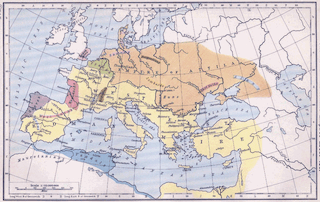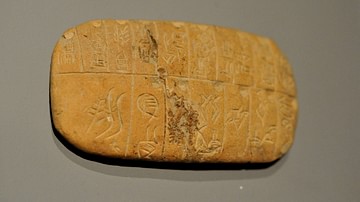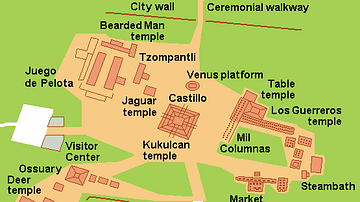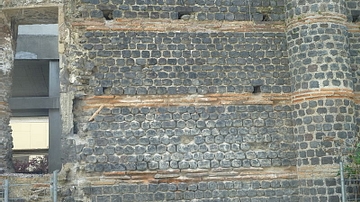Search Images
Browse Content (p. 1612)

Image
Feast of Attila
Feast of Attila by Mor Than, 1870 CE, now in the Hungarian National Gallery. In this scene, visitors stand before Attila and his guests, singing songs that they have composed. Attila in at the center of the composition, it is thought that...

Image
Empire of Attila the Hun
Map showing the empire of Attila the Hun c. 450 CE.

Image
Part of Tablet V, the Epic of Gilgamesh
A newly discovered partially broken tablet V of the Epic of Gilgamesh: "the episode of the journey of Gilgamesh and Enkidu." According to Professor Farouk Al-Rawi (of the School of Oriental and African Studies, University of London), this...

Image
Economic Clay Tablet
This tablet contains a list of goods. From Mesopotamia, Iraq. Early dynastic period, 3rd millennium BCE. The Sulaimaniya Museum, Iraq.

Image
Attila the Hun by Delacroix
Detail of Attila from the romanticist painting Attila and his Hordes Overrun Italy and the Arts (1838-1847) by Eugene Delacroix. Palais Bourbon, Paris (France).

Image
The Caracol, Chichen Itza
The Caracol or Observatory of Chichen Itza, Mexico. Constructed prior to 800 CE, this Maya building was used as an astronomical observatory, especially of Venus.

Image
Temple of the Warriors, Chichen Itza
The Temple of the Warriors at the Maya-Toltec city of Chichen Itza, Mexico. Built between 800 and 1050 CE, the three-level pyramid is so called because of the colonnade of carved warrior and gift-bearer columns on its two sides.

Image
Map of Chichen Itza
A map of the principal monuments of the Maya-Toltec city Chichen Itza, Yucatan, Mexico, c. 750-1200 CE.

Image
Osterby Man
The "Osterby Man" was found in a peat bog in 1948 near Osterby, Germany, and has been dated to between 75 and 130 CE. He sports a Suebian knot, a hairstyle associated with the Suebi (Alemanni). State Archaeological Museum at Gottorf Castle...

Image
Vasso Galate (Temple to Mercury),
The last remaining wall (Wall of the Saracens) of the Vasso Galate, temple to the god Mercury, Clermont-Ferrand, France. The temple was destroyed by Chrocus, probably c. 256 CE.